The story of Dhul al-Qarnayn (Zulqarnain) is among the most captivating narratives in the Qur’an, found in Surah Al-Kahf (18:83–101). It tells of a righteous and powerful ruler whom Allah blessed with authority, wisdom, and the means to traverse vast lands from the East to the West. More than a tale of exploration, it is a profound lesson in faith, leadership, humility, and justice.
“And they ask you about Dhul-Qarnayn. Say: ‘I will recite to you something of his story.’” (Qur’an 18:83)
When the people asked Prophet Muhammad (peace be upon him) about Dhul al-Qarnayn, Allah revealed his story, not as a historical record, but as a timeless reminder of how true power lies in serving humanity for the sake of Allah. Dhul al-Qarnayn’s journeys across civilizations, his encounters with different peoples, and his construction of the barrier against Ya’juj and Ma’juj (Gog and Magog) all highlight the balance between worldly strength and divine obedience.
The narrative of Dhul-al-Qarnayn (in Arabic ذُو ٱلْقَرْنَيْن, Dhul al-Qarnayn, literally “the Possessor of Two Horns” or “One of Two Epochs/Horns”) occupies verses 83-101 of Surah al‑Kahf (Chapter 18) of the Qur’an.
While his historical identity remains uncertain and subject to scholarly debate, the Qur’anic story emphasizes his faith, leadership, justice, and the lessons that believers can draw from his example.
In essence, his story is not just about a mighty king, it is about a believer who used knowledge, justice, and faith to bring peace and stability wherever he went. The lessons within this story guide Muslims today on how to exercise responsibility, lead with fairness, and remain humble despite power or achievement.
Key Verses (Arabic, transliteration, English translation)
The Jews of Madinah were deeply interested in inquiring about Dhul Qarnayn from Prophet Muhammad (peace be upon him) because they recognized this story from their own ancient scriptures and sought to test the authenticity of his prophethood. According to historical narrations, the Jewish scholars advised the Quraysh of Makkah to ask the Prophet three specific questions, one of them being about “a great traveler who reached the east and west of the earth”, referring to Dhul Qarnayn.
They knew that only a true prophet would possess accurate knowledge of such a figure. The question was therefore a test: if Muhammad (peace be upon him) could correctly describe Dhul Qarnayn’s story, it would confirm that his revelations came from Allah, not from human learning. When Surah Al-Kahf (18:83–101) was revealed in response, it not only affirmed his prophethood but also provided a deeper, more moral and spiritual perspective on Dhul Qarnayn than any earlier account, demonstrating the Qur’an’s divine source and comprehensive knowledge.
Below are selected verses from Surah al-Kahf relevant to the story of Dhul-al-Qarnayn.
Verse 83
Arabic:
وَيَسْـَٔلُونَكَ عَن ذِي الْقَرْنَيْنِ ۖ قُلْ سَأَتْلُو عَلَيْكُم مِّنْهُ ذِكْرًا
Transliteration:
wa-yasʾalūnaka ʿan dhī al-qarnayn; qul sa’atlū ʿalaykum min’hu dhikrā
English (Sahih International):
“And they ask you about Dhul-Qarnayn. Say: ‘I will recite to you about him a report.’”
Verse 84
Arabic:
إِنَّا مَكَّنَّا لَهُ فِي الْأَرْضِ وَآتَيْنَاهُ مِن كُلِّ شَيْءٍ سَبَبًا
Transliteration:
innā makkannā lahu fī al-arḍi wa ātaynāhu min kulli shay’in sababā
English:
“Indeed We (Allah) established him upon the earth and gave him to everything a way (or means).”
Verse 86
Arabic:
حَتَّىٰ إِذَا بَلَغَ مَغْرِبَ الشَّمْسِ وَجَدَهَا تَغْرُبُ فِي عَيْنٍ حَمِيَّةٍ ۖ وَوَجَدَ قَوْمًا ۖ فَلَمْ نَجْعَل لَّهُمْ مِن دُونِهَا سَدًّا
Transliteration:
ḥattā idhā balagha maghriba ash-shamsi wajadahā taghrubu fī ʿaynin ḥamiyyatin; wa wajada qawman falam najʿal lahum min dūnihā saddā
English:
“Until, when he reached the setting of the sun, he found it setting in a muddy spring, and he found a people for whom We had not made from that a covering.”
Verse 94
Arabic:
قَالُوا يَٰذَا الْقَرْنَيْنِ إِنَّا يَأْجُوجَ وَمَأْجُوجَ مُفْسِدُونَ فِي الْأَرْضِ فَهَلْ نَجْعَل لَكَ خَرْجًا عَلَىٰ أَن تَجْعَلَ بَيْنَنَا وَبَيْنَهُم سَدًّا
Transliteration:
qālū yā dhā al-qarnayn; innā ya’jūja wa ma’jūja mufsidūna fī al-arḍi; fahal najʿalu laka kharjan ʿalā an tajʿala baynanā wa baynahum saddā
English:
“They said: ‘O Dhul-Qarnayn! Indeed Gog and Magog are [great] corrupters in the land. So may we assign for you a tribute that you might make between us and them a barrier?’”
Verse 98
Arabic:
قَالَ هَـٰذِهِ رَحْمَةٌ مِّن رَّبِّي ۖ فَإِذَا جَاء وَعْدُ رَبِّي جَعَلَهَا دَكًّا وَكَانَ وَعْدُ رَبِّي حَقًّا
Transliteration:
qāla hādhihi raḥmatun min rabbi; fa-idhā jā’a waʿdu rabbi jaʿalahā dakkan; wa kāna waʿdu rabbi ḥaqqā
English:
“He said, ‘This is a mercy from my Lord; but when the promise of my Lord comes, He will make it level, and the promise of my Lord is true.’”
The Three Journeys of Dhul-al-Qarnayn
Islamic commentaries identify three distinct journeys undertaken by Dhul-al-Qarnayn in the Qur’anic narrative. These are metaphoric as well as historical-moral in meaning.
Journey to the West (Sunset)
Verses 86-88 describe his travel to “the setting of the sun”. He reaches a place where the sun appears to set in a muddy spring, and he meets a people. Allah says: “O Dhul-Qarnayn! Either you punish them or treat them kindly.” (18:86)
He chooses justice and benevolence, saying:
“As for one who does wrong, We will punish him, then return him to his Lord, who will punish him with a terrible punishment. But as for one who believes and does righteous deeds, he will have the best reward…” (18:87-88)
This journey emphasizes: justice, mercy and the idea that authority is a trust from Allah.
Journey to the East (Sunrise)
Verses 89-90 describe his next travel:
“Then he followed a way. Until, when he came to the rising of the sun, he found it rising on a people for whom We had not made any shelter against it.” (18:89-90)
In this land, he finds people vulnerable to the elements and instructs them in knowledge and building. Scholars interpret this as reforming, teaching and uplifting a weak community rather than simply conquering.
Journey Between Two Mountains (Barrier against Gog and Magog)
Verses 92-97 cover his journey to a place “between two mountains”, where he finds people who speak little. They explain that the tribes of Gog and Ma’juj are causing corruption and ask Dhul-al-Qarnayn to build a barrier. (18:94)
His response:
“That in which my Lord has established me is better (than what you offer). So help me with strength and I will make between you and them a barrier.” (18:95)
They gave him iron, he heated it, poured molten copper … so they could not climb over or dig through the barrier. (18:96-97)
Finally he says: “This is a mercy from my Lord. But when the promise of my Lord comes, He will make it level…” (18:98), reminding that worldly barriers are temporary before the Last Day.
This journey highlights: service to vulnerable people, collective effort, humility (“my Lord”), and awareness of the Final Judgment.
Key Lessons from the Story
Here are some of the main take-aways from the story of Dhul-al-Qarnayn, highly relevant for leadership, personal development, and spirituality.
a) Power is a trust and should be used for justice
From verse 84 we learn that the strength and means given to Dhul-al-Qarnayn were from Allah: “We established him … and gave him to everything a way.” His use of power was not for personal glorification but for upholding truth and helping people.
His treatment of the people at the setting of the sun shows balance: he had the option to punish or do good, and he chose righteousness.
b) Humility: Recognizing the source of power
Notice in the barrier narrative he says: “That in which my Lord has established me is better…” (18:95) He does not boast, he acknowledges that his capability comes from Allah. This is a moral for all believers: no matter how gifted, we are servants of God.
c) Justice balanced with mercy
In his first journey he meets a people and he is told: “Either punish or treat kindly.” He chooses kindness for the believers and justice for the wrongdoers (18:87-88) – showing that a wise leader must combine firmness with compassion.
d) Empowering communities, not merely dominating them
In the barrier story: Instead of just building the wall single-handedly, he asks for assistance. The community provides iron, he processes it, they work together. This is a model: leaders follow by example and involve communities. He did not take payment for his services (18:95-96) – showing pure service.
e) Awareness of the Hereafter
Verse 98 reminds us: “This is a mercy from my Lord; but when the promise of my Lord comes, He will make it level…” Temporary worldly arrangements will be equalised on the Day of Judgment. Believers should act keeping the Last Day in mind.
f) Dealing with corruption and chaos
The peoples of Gog and Ma’juj are described as “mufsidoon (corruptors) in the land” (18:94). The story thus becomes an allegory of how evil spreads, and how righteous leadership acts to contain it, but ultimately the final victory belongs to Allah.
g) Travel, exploration, service
Dhul-al-Qarnayn’s journeys emphasise movement: he did not stay in one land but travelled, assessing conditions, interacting with peoples, teaching, reforming. The message: faith invites us to engage with the world, not retreat.
Identity & Scholarly Discussion
One of the intriguing aspects of the story is: Who exactly was Dhul-al-Qarnayn? The Qur’an does not specify his personal name, tribe or era. It simply recounts his story. This has led to multiple scholarly views.
Some key points:
- The Qur’an refers to him by the title “Dhul-al-Qarnayn” only, not by a known historical name.
- Some traditional scholars identified him with the ancient Persian king Cyrus the Great; others with Alexander the Great (though Alexander was not a Muslim nor monotheist).
- Many modern scholars caution that any identification is speculative; the focus of the Qur’an is on his moral example, not on historical biography.
- For example, one report from Ali Ibn Abi Talib says: “He was not a prophet nor a king, but a righteous man with whom Allah did good.” (Musannaf Ibn Abi Shaybah 31914)
Other Versions of Identity
Some Islamic historians and scholars have identified Dhul al-Qarnayn (Zulqarnain) as Cyrus the Great, the just and noble King of Persia (Faris). This interpretation aligns with historical accounts describing Cyrus as a righteous ruler who believed in one God and upheld justice across his vast empire. Unlike many conquerors, he was known for mercy, wisdom, and his respect for different faiths and cultures.
According to both Qur’anic references and historical records, Cyrus liberated the Children of Israel (Bani Isra’il) from the Babylonian captivity, ending their long period of oppression. After conquering Babylon, he issued a decree allowing the Jews to return to Jerusalem (Bayt al-Maqdis) and rebuild their temple; an act of compassion and leadership that earned him lasting honor in Jewish, Christian, and Islamic traditions alike.
Many scholars note that this merciful act mirrors the Qur’anic portrayal of Zulqarnain; a leader who traveled to different lands, restored justice, and protected oppressed peoples by the will of Allah. Thus, identifying Zulqarnain as Cyrus, the King of Persia, beautifully harmonizes history with revelation: a ruler chosen and guided by Allah to uphold truth, defend the weak, and spread righteousness throughout the earth.
Why the ambiguity?
The Qur’an often tells stories with essential meaning rather than full historical data; Allah reveals what is beneficial. (See 18:83: “I will recite to you something of his story.”)
This ambiguity prevents fanatic debates and encourages focus on lessons rather than endless historical speculation.
Relevance for Today & Eschatological Dimension
In today’s world, the story of Dhul al-Qarnayn remains a timeless guide for ethical leadership and global responsibility. His actions remind us that true strength lies in serving humanity with justice and humility. Moreover, the eschatological reference to Ya’juj and Ma’juj (Gog and Magog) serves as a warning about the final trials before the Day of Judgment, urging believers to stay steadfast in faith and righteousness.
Relevance for believers and leadership
- The story provides a model of ethical leadership: using resources for the public good, justice, service, humility.
- In modern contexts: whether a community leader, parent, manager, or educator, the principles of Dhul-al-Qarnayn apply: power is a trust, and serving others is paramount.
- The theme of travelling, exploring, meeting different people, teaching them, is very relevant in today’s interconnected world.
Eschatological dimension: Gog and Ma’juj
The story’s third journey deals with the barrier built between peoples and Gog and Ma’juj. In Islamic eschatology, Gog and Ma’juj appear again near the end times causing massive turmoil. The barrier of Dhul-al-Qarnayn is a temporary respite:
“This is a mercy from my Lord; but when the promise of my Lord comes, He will make it level…” (18:98)
This teaches that worldly security is temporary; ultimate justice belongs to Allah.
The notion of service across boundaries
Dhul-al-Qarnayn’s journeys went to “west” and “east” (“maghrib” and “masrigh”) – symbolic of reaching all peoples. This invites believers to engage beyond their immediate circles, to help oppressed people, and to seek justice universally.
Scientific Reflections on Zulqarnain’s Travels
The story of Dhul al-Qarnayn beautifully bridges the spiritual and scientific worlds. While classical tafsir interprets his travels as earthly expeditions, modern insights reveal deeper cosmic and multidimensional meanings that align with the vastness of Allah’s creation. The Qur’an, in its timeless wisdom, describes realities that continue to unfold with human discovery, reminding us that faith and knowledge are never in conflict, but reflections of the same divine truth.
“We shall show them Our signs in the horizons and within themselves until it becomes clear to them that this is the Truth.” – (Surah Fussilat 41:53)
The story of Dhul al-Qarnayn (Zulqarnain) may align with scientific concepts and cosmic realities mentioned in the Qur’an. While we must approach such interpretations respectfully and symbolically, there are fascinating insights that connect his travels to astronomy, relativity, and multidimensional phenomena described in modern science.
The “Place Where the Sun Sets”: Possible Astronomical or Black Hole Imagery
The Qur’an describes Dhul al-Qarnayn reaching “the place where the sun sets, and he found it setting in a spring of dark mud” (Surah Al-Kahf 18:86).
Early scholars took this literally as his reaching the far west of the known world. However, some modern thinkers interpret it metaphorically or cosmically, suggesting that it could refer to an observation of a celestial event, such as the sun appearing to vanish into the horizon (or even symbolically into a dense, dark region of space).
In modern astrophysics, a black hole or collapsed star is often described as a place where light itself disappears and this aligns poetically with the Qur’anic imagery of the sun “setting in a dark spring” (aynin hamiya).
Journey to the East: Light and Energy Dimensions
His journey “to the rising place of the sun” (18:90) could represent the opposite pole of his earlier travel, a movement not just geographically, but dimensionally, from darkness to light. Some interpret this as symbolic of exploring the realms of creation and energy, moving closer to regions of intense light, akin to studying solar phenomena, or metaphorically, the radiant truth of divine order.
“Ways and Means”: Possible Reference to Advanced Knowledge or Physics
The Qur’an says: “Indeed, We established him on the earth and gave him to everything a way (sabab)” (18:84).
The word “sabab” means a means, pathway, or cause, a term that could encompass scientific laws or universal principles. This verse can be viewed as Allah granting Dhul al-Qarnayn access to deep natural knowledge, possibly cosmic laws, navigation methods, or technologies that allowed him to travel across regions (or dimensions) inaccessible to ordinary people.
Barrier of Ya’juj and Ma’juj: Symbol of Interdimensional Containment
When Dhul al-Qarnayn built a barrier of iron and molten copper to contain the destructive tribes of Gog and Magog, some modern scholars see this as more than a physical wall. It could symbolize a dimensional or energetic barrier, a form of containment beyond human perception, possibly a magnetic or metaphysical boundary that restrains certain destructive forces until the end times (as mentioned in 18:98).
Relativity of Time and Cosmic Travel
His extensive journeys “to the west, east, and between two mountains” across vast, possibly cosmic distances may relate to time dilation and space-time relativity, concepts we now understand through Einstein’s theory of relativity. If Dhul al-Qarnayn traveled with divine assistance, his movement could have involved alterations in time perception, similar to what the Qur’an describes in other miracles (e.g., the People of the Cave sleeping for centuries or the journey of Isra and Mi’raj).
Summary & Reflection
The story of Dhul-al-Qarnayn (Zul-Qarnain) is a rich, multi-layered narrative within the Qur’an. It is not merely a tale of geographical travel; it is a moral parable about how Allah grants means and authority, and how a righteous person uses them. The key themes: justice, humility, service, awareness of the Hereafter, and caring for the oppressed.
While the historical identity of Dhul-al-Qarnayn remains uncertain, the spiritual and ethical lessons are clear and timeless. As believers, whether leaders or servants, we can reflect: What “means” has Allah given me? Am I using them for truth or merely for my own gain?
“Indeed We established him on the earth and gave him to everything a way.” (18:84)
“This is a mercy from my Lord… but when the promise of my Lord comes, He will make it level.” (18:98)
Let us take inspiration from Dhul-al-Qarnayn’s example: to serve humanity with the mindset of accountability to Allah. May Allah grant us understanding, guide us by the examples He has given, and make us among those who act with justice, humility and service.
“And say: ‘My Lord! Increase me in knowledge.’” (Qur’an 20:114)

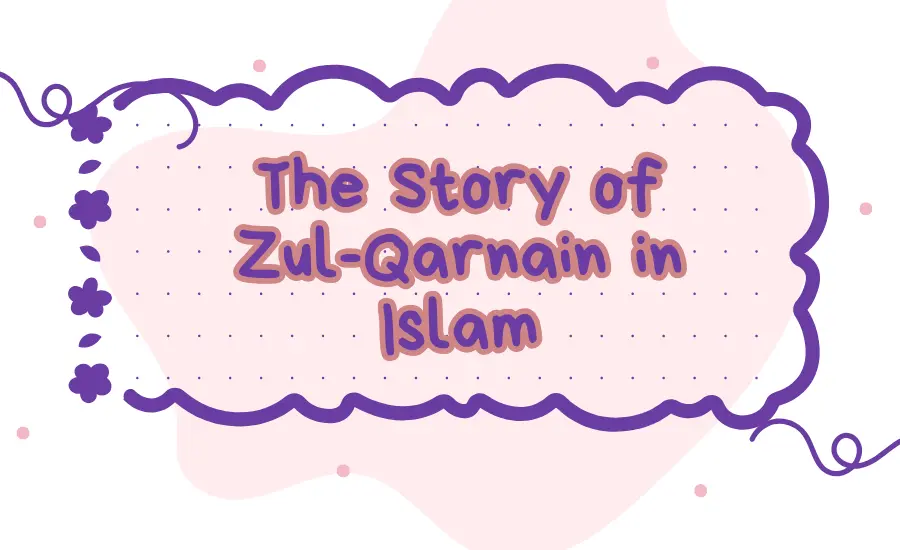
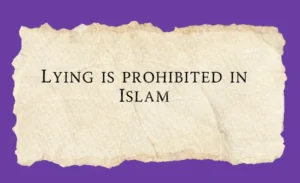
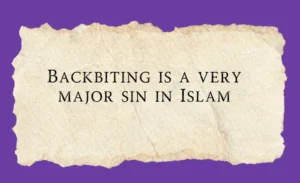
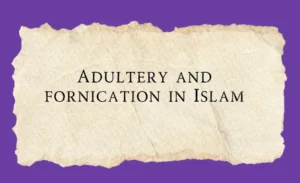
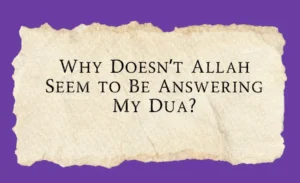

2 Responses
The story of Zul-Qarnain in Islam highlights justice, wisdom, and the use of power for the benefit of humanity. To explore his remarkable journey and its divine lessons, you can read surah kahf in roman english, where his story teaches the value of faith and righteous leadership.
very interesting details you have observed, appreciate it for putting up.